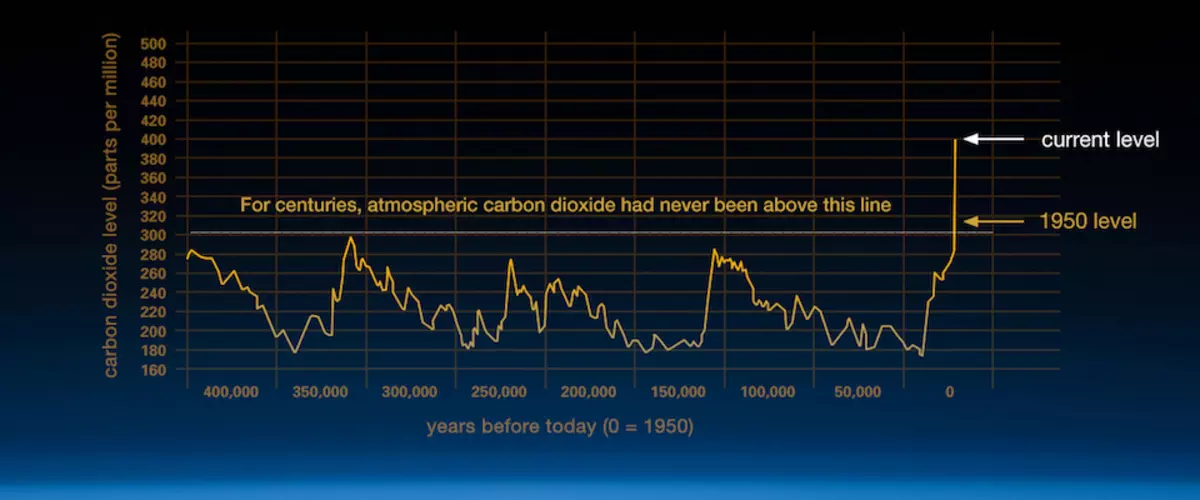The Climate Change MEL
MEL Activity
There is one form of this MEL Climate Change Activity....a pre-constructed (pcMEL). The pcMEL limits student choices, which may be good for the first time the activity is introduced to a class or if you are working at earlier grade levels. Below the activity link are additional teaching resources that will help students use the Climate Change pcMEL and learn more about fundamental scientific principles related to climate and weather.
Overview
This article provides an provides an overview of the MEL diagram activities, using the Climate Change pcMEL as an example.
Beyond the Controversy (Acrobat (PDF) 667kB Jun4 18)Next Generation Science Standards Performance Expectations
HS-ESS3-5: Earth and Human Activity
- Analyze geoscience data and the results from global climate models to make an evidence-based forecast of the current rate of global or regional climate change and associated future impacts to Earth systems.
HS-ESS3-4: Earth and Human Activity
- Evaluate or refine a technological solution that reduces impacts of human activities on natural systems.
Lateral Reading (LR) Resources
What does it mean for a source to be credible? Why should we investigate whether a source is credible before we read it? How do we decide whether online sources are credible? Use lateral reading to find out.
Use lateral reading to evaluate the credibility of three sources related to climate change.
These LR sources connect to Evidence #2: Solar activity has decreased since 1970. Lower activity means that Earth has received less of the Sun's energy. But, Earth's temperature has continued to rise.
Use the LR Guiding Questions to evaluate the credibility of each source.
- LR Guiding Questions (Acrobat (PDF) 28kB Jun8 23)
- Source A: Sun & climate: moving in opposite directions
- Source B: Solar Climatic Effects (Recent Influence) Summary
- Source C: The sun is not responsible for the recent global warming trends Source article not available
Other Resources
This Plausibility Ranking Task (PRT), which may be completed prior to using any MELs, helps students to understand the role of evidence in supporting or refuting models.
- Plausibility Ranking Task (Acrobat (PDF) 76kB May6 24)
Virtual MEL
The Google Drive folder below contains MEL resource documents in the Google formats. In order to maximize the flexibility of our activities, the MEL Project Team wanted to make more resources compatible with virtual settings. We have made our MEL scaffolds available in Google formats, so that they can be copied, modified, and uploaded more easily on a variety of platforms and devices. Please note that to access all the materials for each MEL scaffold, you will need a Google account. View the README file first.
- README First Instructions & FAQ (Acrobat (PDF) 70kB May24 21)
- Virtual Climate Change MEL Resource Documents in Google Drive
Digital Resources
The mission of Climate Change: Vital Signs of the Planet is to provide the public with accurate and timely news and information about Earth's changing climate, along with current data and visualizations, presented from the unique perspective of NASA, one of the world's leading climate research agencies.
Climate Literacy and Energy Awareness Network (CLEAN) stewards a reviewed collection of free, high-quality teaching materials for teaching climate and energy and supports a community of professionals committed to improving climate and energy literacy.
NASA's The Causes of Climate Change webpage explains how human activities are driving the global warming trend observed since the mid-20th century.
NOAA's Climate.gov provides timely and authoritative scientific data and information about climate science, adaptation, and mitigation. It promotes public understanding of climate science and climate-related events, making NOAA data products and services easy to access and use. It serves people making climate-related decisions with tools and resources that help them answer specific questions.
The US Climate Resilience Toolkit is a website designed to help people find and use tools, information, and subject matter expertise to build climate resilience. The Toolkit offers information from all across the U.S. federal government in one easy-to-use location. Its goal is to improve people's ability to understand and manage their climate-related risks and opportunities, and to help them make their communities and businesses more resilient to extreme events.


![[reuse info]](/images/information_16.png)





